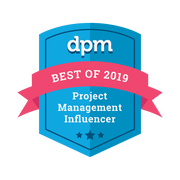In the podcast interview Agata explains that the future lies in diversity and inclusion. As project managers we want our team members to be innovative, to solve problems and to identify risks before they turn into issues. This is much more likely to happen if there is diversity of thinking inside the team. People with different backgrounds, culture and gender, see the world from different angles and solve problems in different ways. In teams where there is diversity of thinking, levels of innovation can be up to 20% higher and 30% more risks can be spotted.
These statistics are backed up by McKinsey research which shows that companies in the top-quartile for gender diversity on executive teams are 21% more likely to outperform on profitability and 27% more likely to have superior value creation. But it’s not just gender that’s making a difference. Companies in the top-quartile for ethnic/cultural diversity on executive teams were 33% more likely to have industry-leading profitability. McKinsey’s research also shows that there is a penalty for opting out. Companies in the bottom quartile for both gender and ethnic/ cultural diversity were 29% less likely to achieve above-average profitability than were all other companies in the data set. Not only were they not leading, they were lagging.
Although the business case is strong for inclusion and for hiring people who are wired differently, this is not always common practice. The issue is that we tend to surround ourselves with people who think like we do. And that’s a really bad idea if you want your team to excel in the long team. The financial crisis was partly caused by organizations run by similar types of people with a large appetite for risk and monetary results. A much more balanced team would be one were all personality types are represented. You do need someone who is results-oriented in your team, but you also need people who are fun, inspiring and creative, people who value harmony and sustainability and someone who looks after the detail and ensures that work is completed to a high standard.
Diversity of thinking is not enough. You also need inclusion.
Diversity of thinking doesn’t automatically create a team that’s good at innovating, solving problems or spotting risks. Diversity without inclusion won’t work. You also have to include people and treat them with fairness and respect. As I have written about previously people have six fundamental human needs that need to be fulfilled. These fundamental needs are related to feeling safe and certain, feeling valued and significant, feeling that we belong in the team, feeling that we have opportunities to grow and develop and that the work we do have meaning and purpose.
As a project manager and leader you have to cater for these human needs if you want people to contribute and come forward with their knowledge and ideas. Some of it is pretty simple such as spending time together, going for lunch, collaboratively solving problems, inviting everyone to team meetings and making information readily available. If people feel excluded there’s little chance they are going to contribute. Other aspects require more thought and emotional intelligence, such as making people feel safe and certain. If team members don’t feel safe to contribute with their ideas and openly ask a question or share a concern, they will hold back and withdraw from the debate.
To increase your team’s performance, make a conscious effort to include all team members, be interested and curious about their background and what they have to say. No one enjoys working for a diminishing leader who likes to hear himself talk and who believes that he is the smartest person in the room. Instead walk your talk and show that diversity and inclusion can have a real impact on project performance. As an inclusive leader you have to empower the team, foster collaboration and seek to overcome your biases and blind spots. An important aspect is making sure that your way of thinking doesn’t have an adverse effect on decision-making. How can you do that? By asking your team for feedback. Opening yourself up to other people’s views on your leadership style is one of the most powerful things you can do on your road to becoming and inclusive leader.
If you liked this post, you may also like:
Team Motivation: Why we need more than money to be truly fulfilled
How to become a better coach
Top Tips for Providing Effective Feedback
Delegate effectively and thoughtfully
What makes a high performing project team?









 RSS Feed
RSS Feed